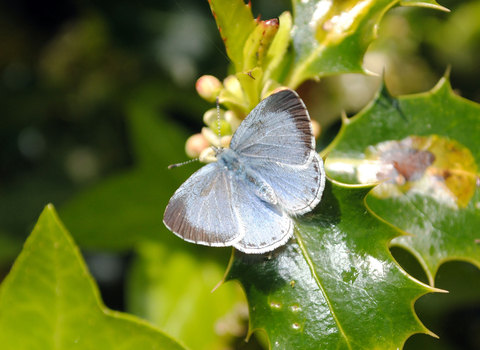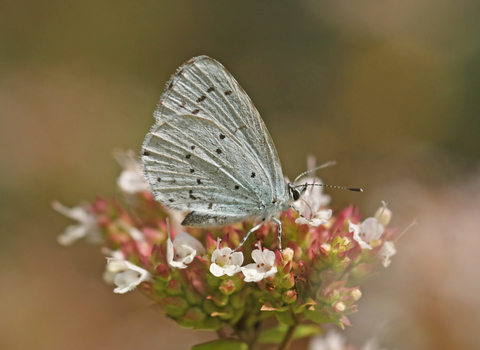
Holly Blue ©Amy Lewis

Holly Blue ©Rachel Scopes
Holly blue
Look out for the small holly blue in your garden or local park. It is the first blue butterfly to emerge in spring, and a second generation appears in summer. The caterpillars are fond of holly and ivy.
Scientific name
Celastrina argiolusWhen to see
April to SeptemberSpecies information
Category
Statistics
Wingspan: 2.6-3.4cmCommon.
